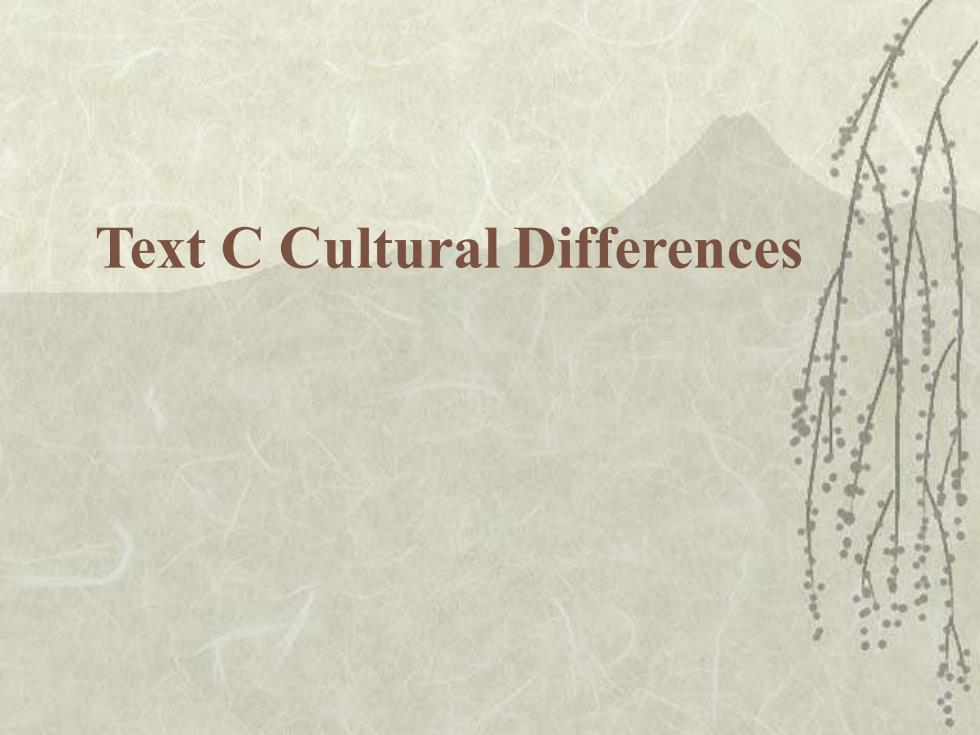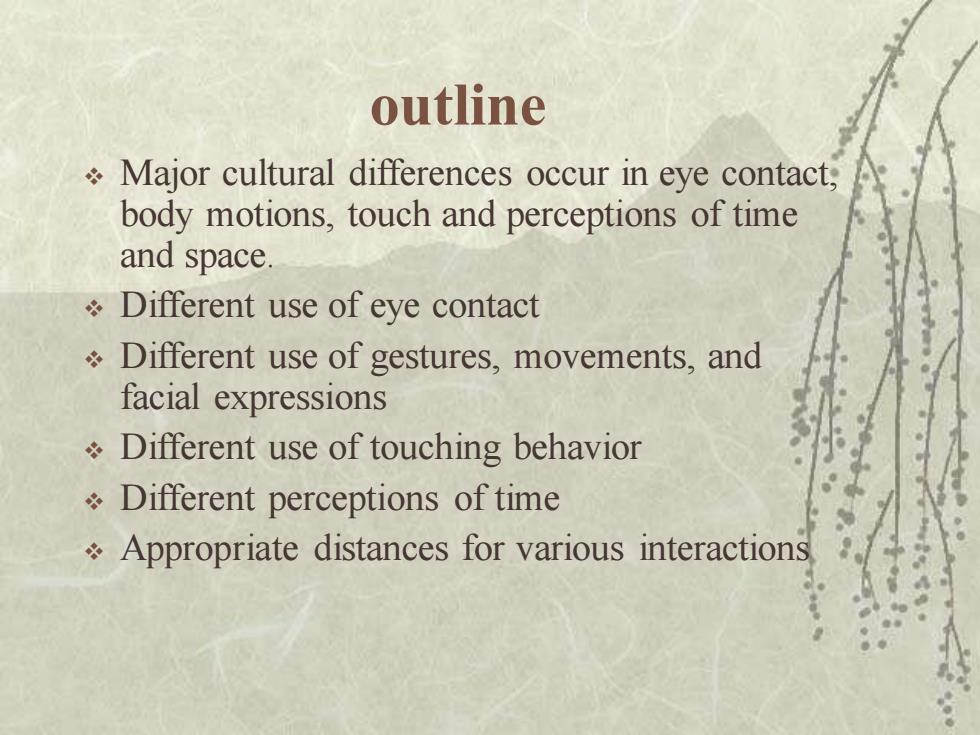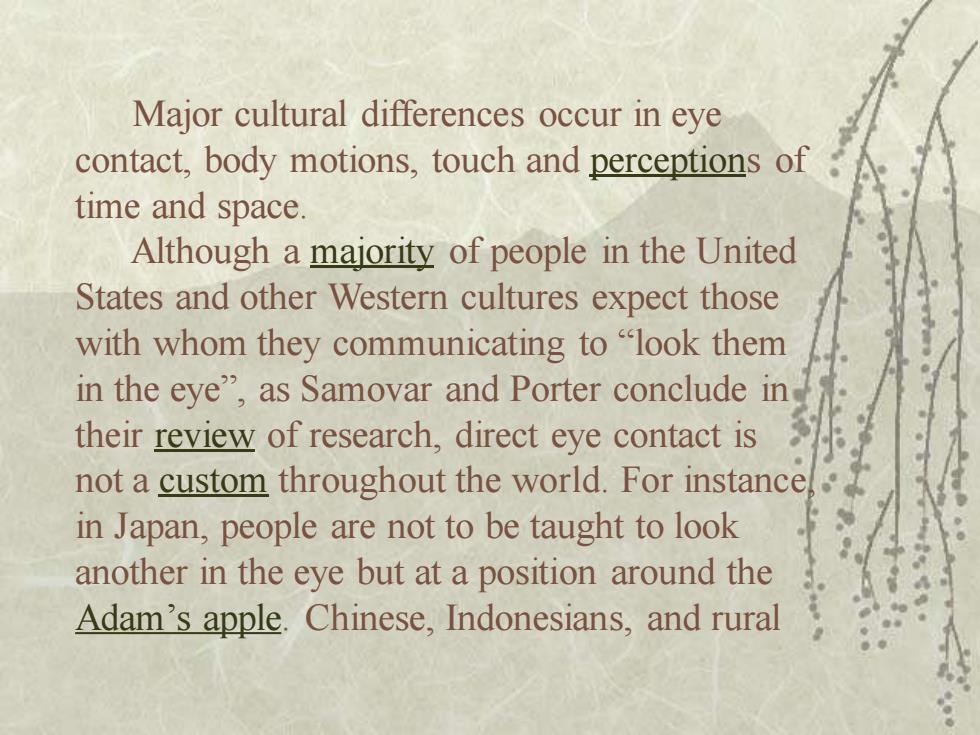
Text C Cultural Differences
Text C Cultural Differences

Warm-up Have you ever noticed body language in different cultures? How do people in different cultures perceive eye contact? How do Americans show "OK"by their gesture? In what areas do usually cultural differences occur according to the passage? Could you tell some differences in different cultures? In your opinion,how could people overcome these differences?
Warm-up ❖ Have you ever noticed body language in different cultures? ❖ How do people in different cultures perceive eye contact? ❖ How do Americans show “OK” by their gesture? ❖ In what areas do usually cultural differences occur according to the passage? ❖ Could you tell some differences in different cultures? ❖ In your opinion, how could people overcome these differences?

outline Major cultural differences occur in eye contact; body motions,touch and perceptions of time and space. Different use of eye contact Different use of gestures,movements,and facial expressions Different use of touching behavior Different perceptions of time Appropriate distances for various interactions
outline ❖ Major cultural differences occur in eye contact, body motions, touch and perceptions of time and space. ❖ Different use of eye contact ❖ Different use of gestures, movements, and facial expressions ❖ Different use of touching behavior ❖ Different perceptions of time ❖ Appropriate distances for various interactions

Major cultural differences occur in eye contact,body motions,touch and perceptions of time and space. Although a majority of people in the United States and other Western cultures expect those with whom they communicating to"look them in the eye",as Samovar and Porter conclude in their review of research,direct eye contact is not a custom throughout the world.For instance in Japan,people are not to be taught to look another in the eye but at a position around the Adam's apple.Chinese,Indonesians,and rural
Major cultural differences occur in eye contact, body motions, touch and perceptions of time and space. Although a majority of people in the United States and other Western cultures expect those with whom they communicating to “look them in the eye”, as Samovar and Porter conclude in their review of research, direct eye contact is not a custom throughout the world. For instance, in Japan, people are not to be taught to look another in the eye but at a position around the Adam’s apple. Chinese, Indonesians, and rural

Mexicans also lower their eyes as a sign of defense -to them too much eye contact is a sign of bad manners.Arabs,in contrast,look directly into the eyes of the person with whom they are talking for long periods -to them direct eye contact shows interest.There are also differences in use of eye contact in the subcultures of the United States.For instance,blacks use more continuous eye contact than whites when they are speaking but less when they are listening
Mexicans also lower their eyes as a sign of defense - to them too much eye contact is a sign of bad manners. Arabs, in contrast, look directly into the eyes of the person with whom they are talking for long periods - to them direct eye contact shows interest. There are also differences in use of eye contact in the subcultures of the United States. For instance, blacks use more continuous eye contact than whites when they are speaking but less when they are listening